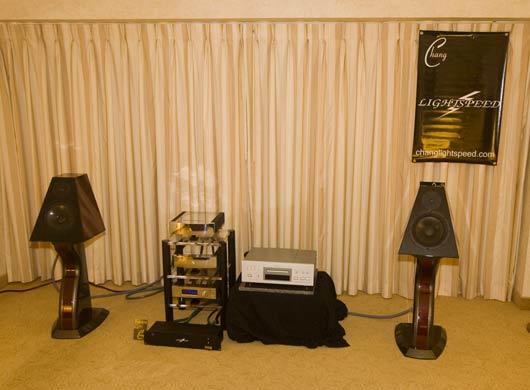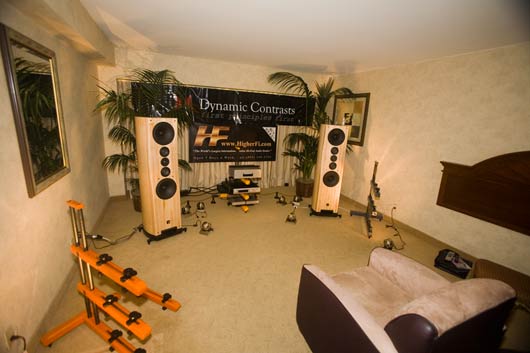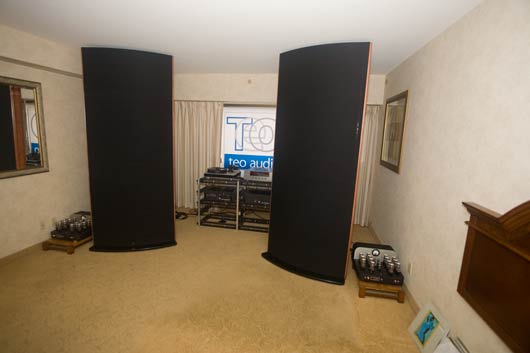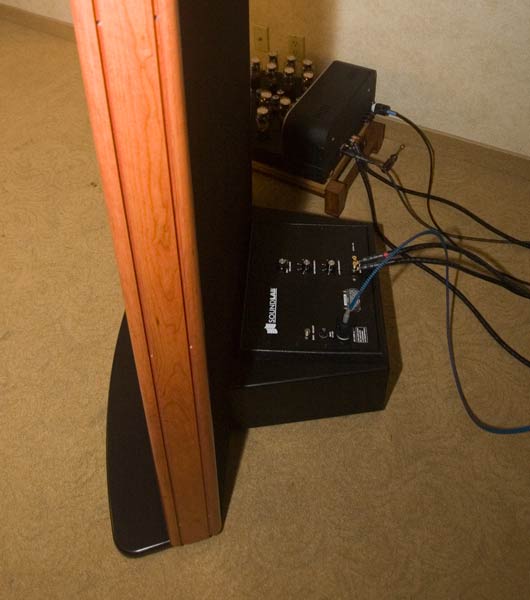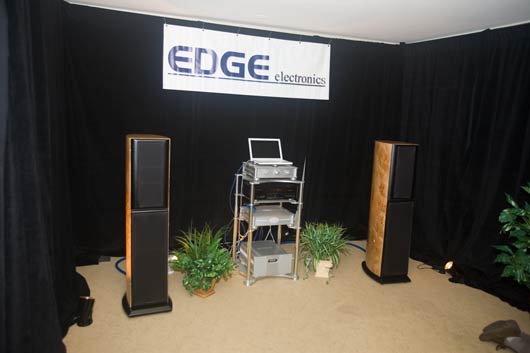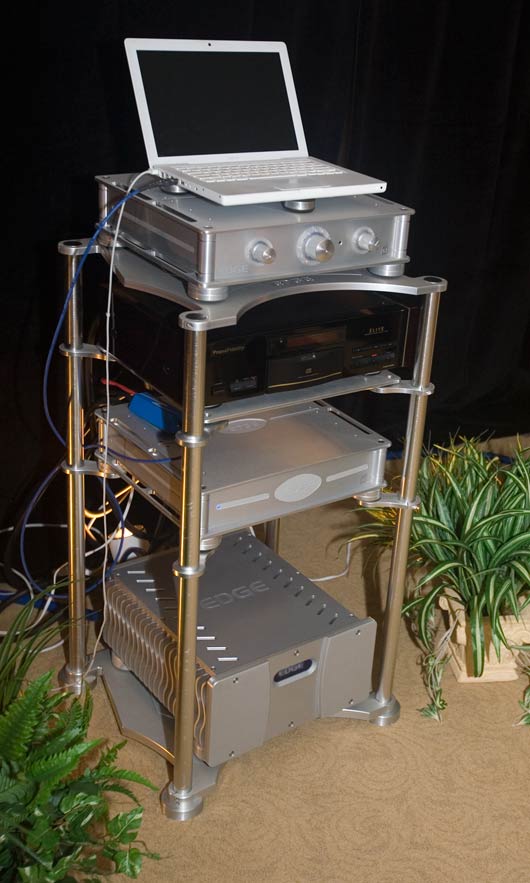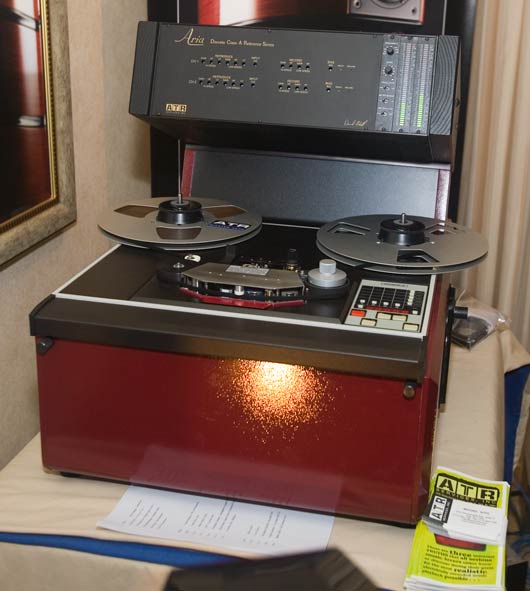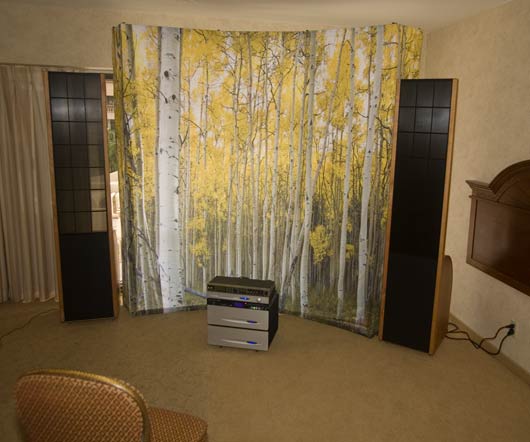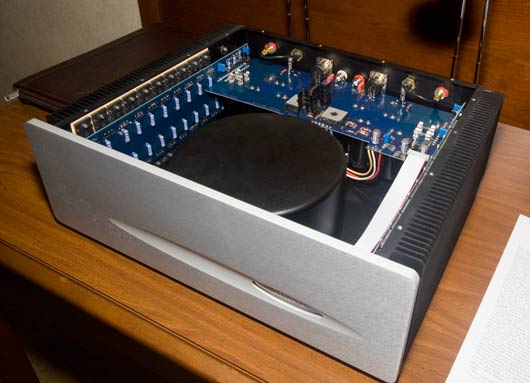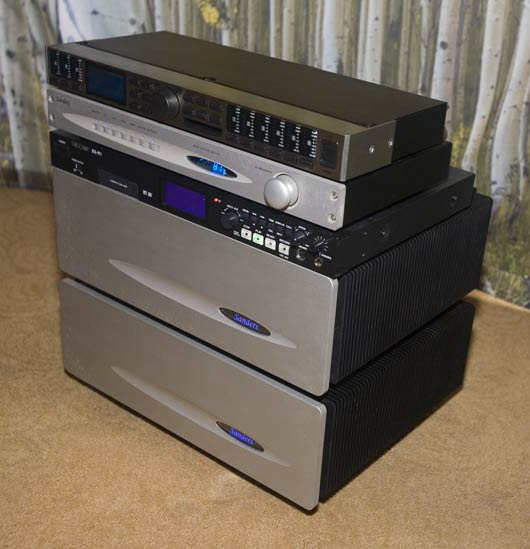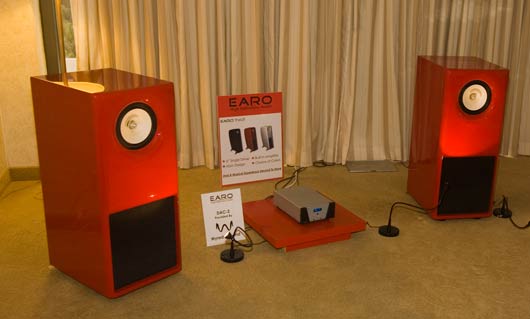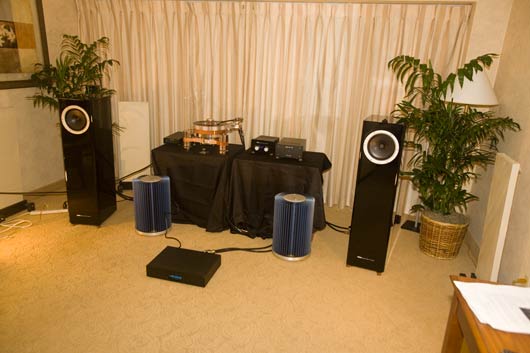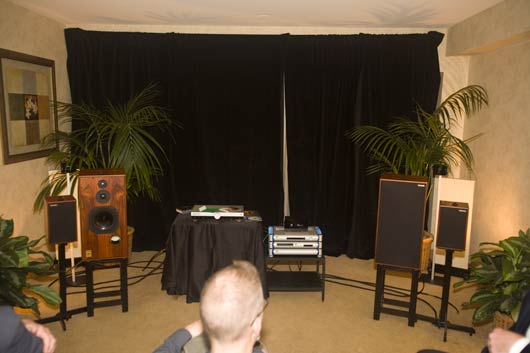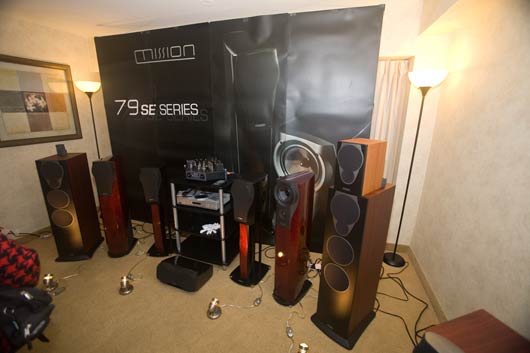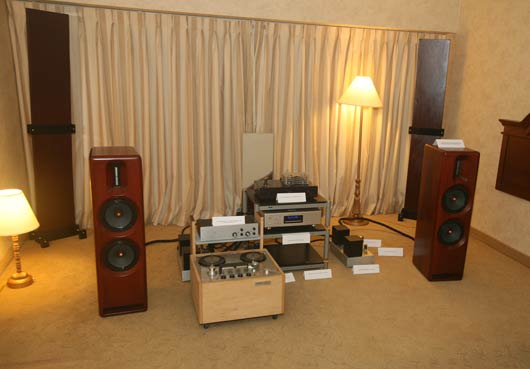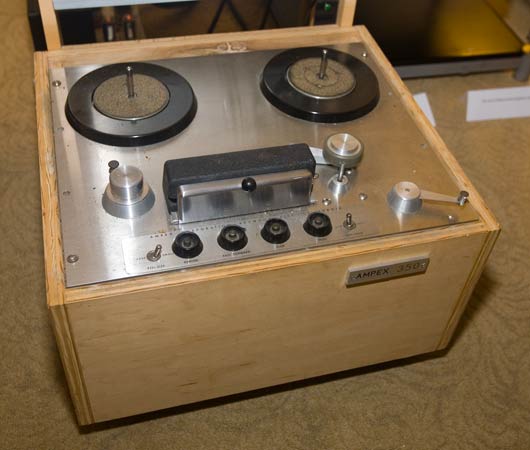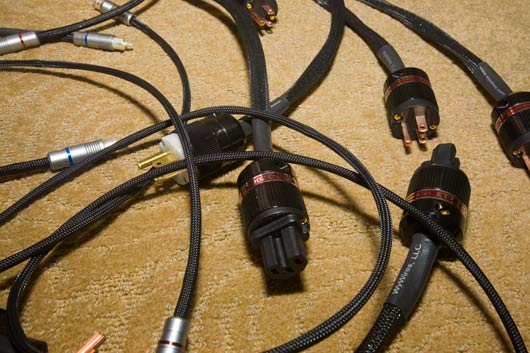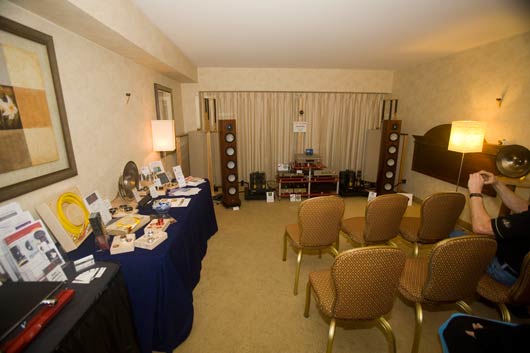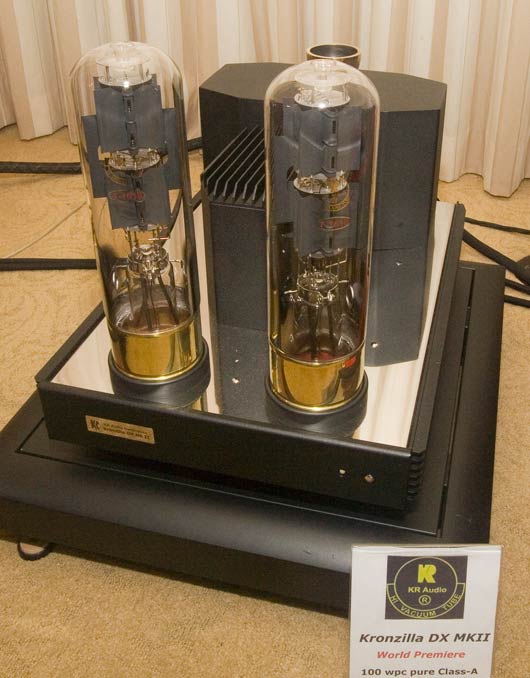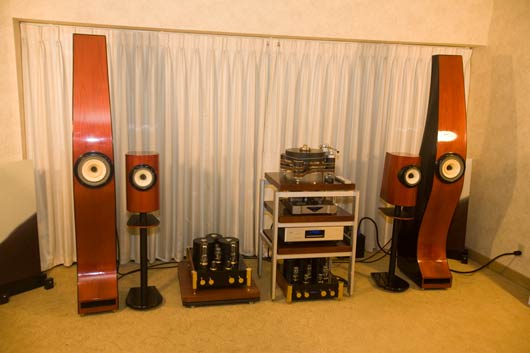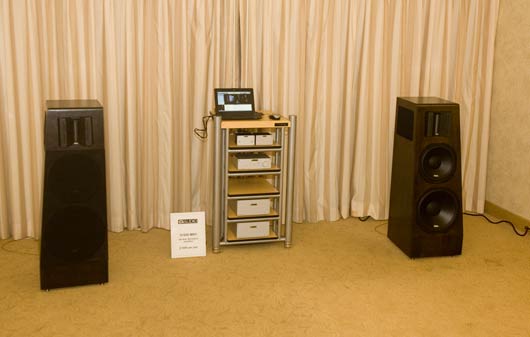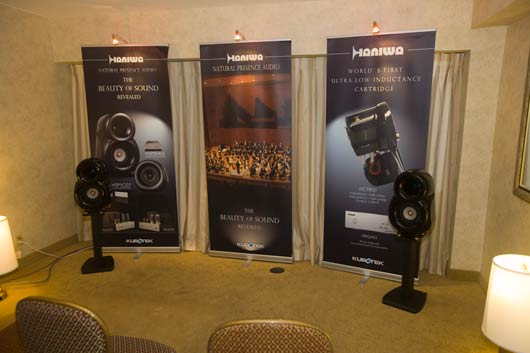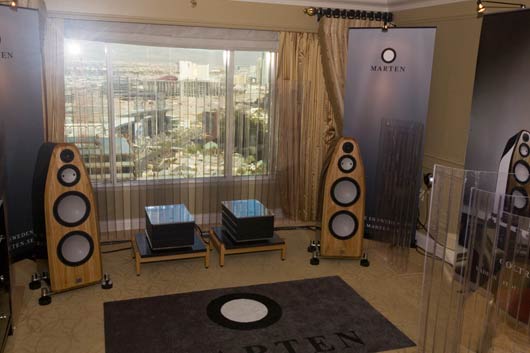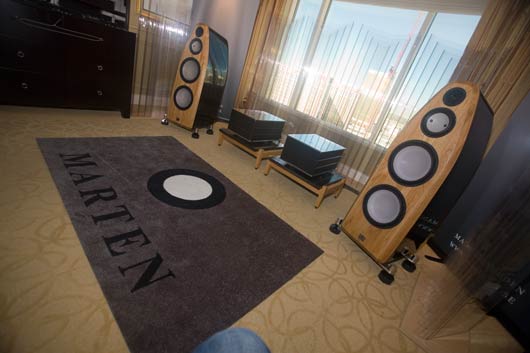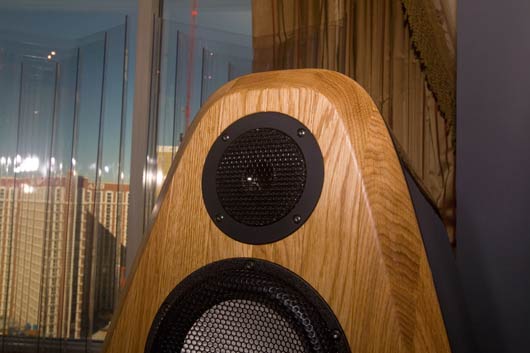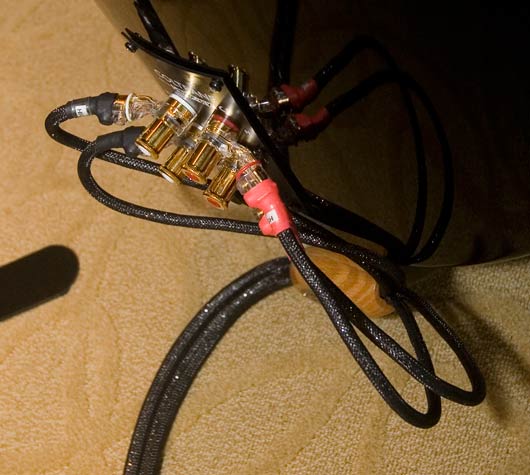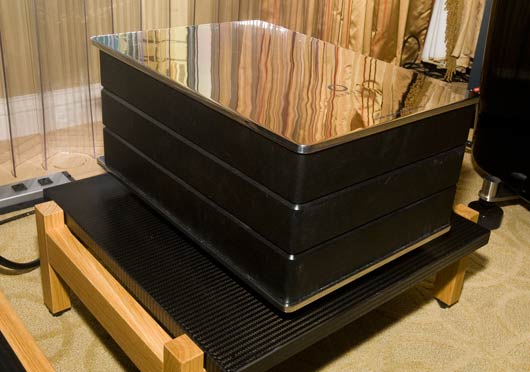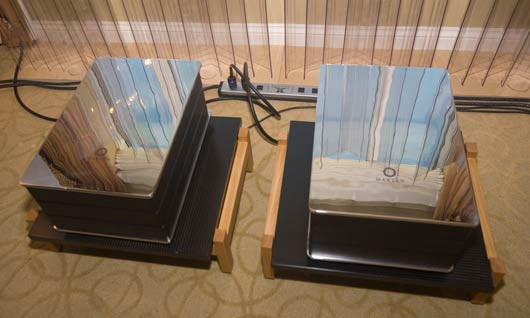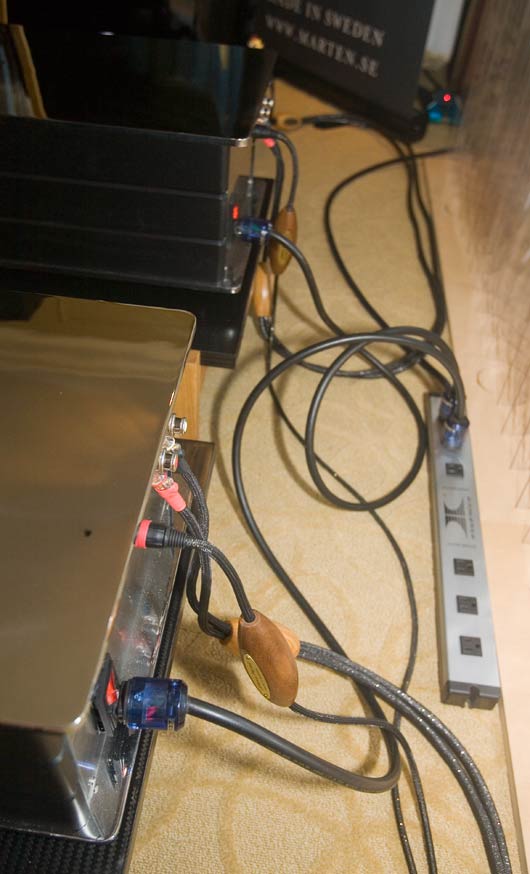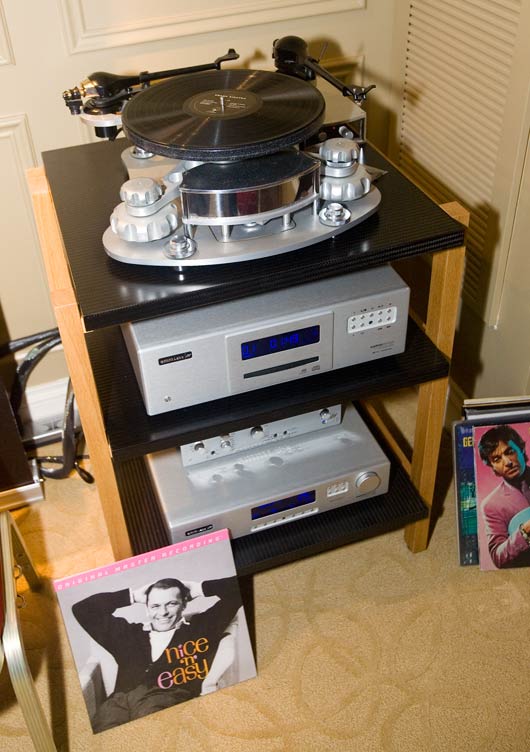The link:
One of the most fascinating things in doing these reports on JV’s reports is trying to figure out what kind of sound he really prefers. This is something we as dealers have to do; and as a writer, it is useful to understand why people have the opinions they do about the sound we all are, presumably, hearing [more difficult at a show, where the room sound changes day to day, and our test tracks vary wildly from each other [I’ll have to look into adding Mario Lanza :-). (we do have various CDs and LPs of Mario’s here). This year my test tracks were Radiohead, Amnesiac – which most systems fail miserably at, and Mark Knopfler, Sailing to Philadelphia – which is a polite song that most systems can deal with. So, depending on the system, I will play one or the other – or both].
Might as well make a comment about JV’s reference speakers and how that is reflected in his show report [and get myself in trouble from the get go :-)]. There were several comments about how people who did not like the Magico Q5 speakers were people who perhaps preferred a sweeter-than-life sound [or words to that effect]. Certainly that may be the case – but a more fundamental concern is that, these speakers being so hard to drive, micro-dynamics, as well as correct decay, is just too difficult for most [all?] amps to manage on these speakers – and I believe that it is these two more subtle attributes of music that give music its life and emotional content. These are real world attributes of music, not some syrupy sweetener, that are missing from the Magico rooms at these shows
The Q5 being an aluminum speaker means that there have very little of the common speaker resonance problems [there may be other resonance-type issues, however, based on the basic design of the speaker. I think the Magico is slightly better than the YG Acoustics, also aluminum speakers, in this aspect]. I personally think this lack of cabinet coloration is addictive. [Luckily I also listen extensively to Audio Note speakers, where the cabinet is designed to resonate ;-)].
Similarly with the big ARC amps, their slightly whitish edge and lack of ultimate dexterity lends itself to JV preferring a slightly aggressive, in your face dynamic sound with not so much in the way of subtle cues.
My preferences are for extreme musical subtlety [harmonic and dynamic] first [seemingly requiring easy to drive speakers with top notch drivers], and I will prefer equipment that preserves the subtleties just sitting there on most source material waiting for me to hear it (them?). This usually requires small amps, which are seemingly more capable of fine detail. Although easy-to-drive speakers with small amps. are naturally dynamic, they are not the same as dense dynamics that come with big sledge-hammer type amps on hard-to-drive speakers [though you can tune a small amp system to do this if you want – which I just learned some people actually want to do].
So with that said, it is surprising that I agree with much of what JV has to say. For example, the Wilson Alexandria room.
* Lamm ML3, Wilson Alexandria
I think I agree 100%, although I bet I have a different explanation [than his which he does not venture to share with us :-)], for why the sound was slightly soft [and I think missing not just some leading edge but subtle details as well. The ML3 amps, BTW, drove these speakers with ease, and the Lamm LL1 and Neodio player performed admirably]. More later in our actual room report. However, differing from JV, I would give this room a BOS if I was giving out BOS, which I am not.
* Magico Q3, Soulution
Uh. Maybe they are warmer than the Q5, but they still seemed to lack what it takes to be musical. ‘Course, the Soulution ain’t exactly musicality friendly either.
As for ‘group delay’ and ‘phase coherence’ … ‘harmonics seem more proportionately lifelike’ … Let’s assume for a moment that minimally resonant cabinets are beneficial in this way, and that Alon has done a reasonably good job with the crossover [which I actually do believe].
My problem is that these cables there are seriously mucking with the frequencies/harmonics and the Soulution is not the fount of harmonic goodness themselves either, not to mention the source being a hard drive. So one can hear the speakers doing well at this *despite* the upstream equipment and *despite* the fact that the sound in that room was as a result harmonically only ‘average’ [for a show]. It is fine for JV to extract details about and report on his favorite speakers – like I do mine – but just realize that the room itself did not sound like anything except a very dynamic and tight solid-state sound that offered up a kind of “gee whiz that is cool” kind of pleasure. [for example, one of our friends there was seriously impressed with the soundstaging (although I, not in the sweet spot, got no soundstaging whatsoever)].
* Tidal
Oops. My original comment was referring to a different room than the one JV was referring to. My apologies. This room I do not remember.
* Sonus Faber
This is the room where JV’s and my [our, Neli was also there] opinions are diametrically opposed. Completely. Absolutely. I believe the speakers were driven with the big ARC amps while we were there [not realizing that, according to JV, they were using various amps during the show]. The sound was dark, lifeless, colorless… i.e. big ick. Not Sonus Faberish at all. As you may not know, Sonus Faber was bought out, and by the same hedge fund that bought ARC et. al. and it was this new company that designed these speakers. Having owned and loved SF Electas and Extremas, [and lusted after many of their other speakers, back in the day], I will burn a candle to their memory. [see, I *told* you we all came away with a vastly different opinion].
To be continued…


